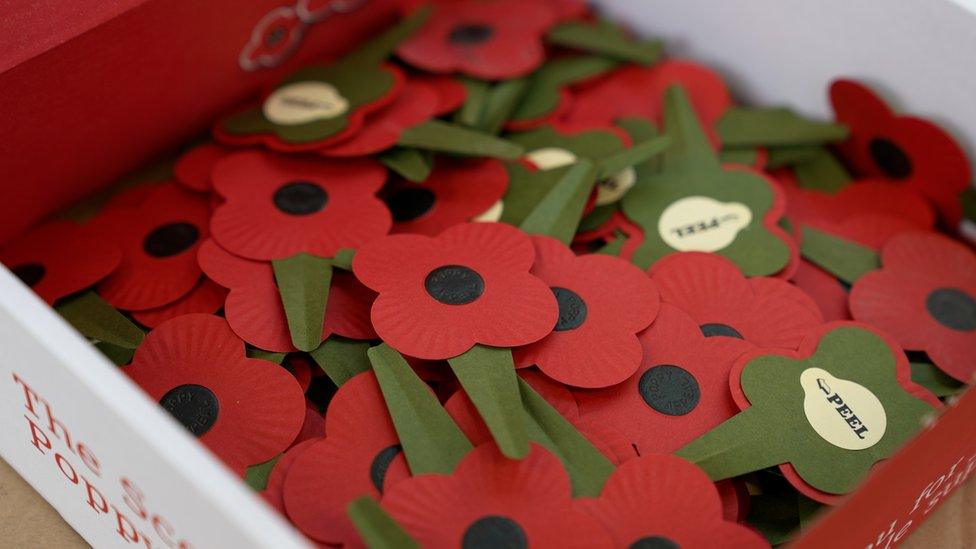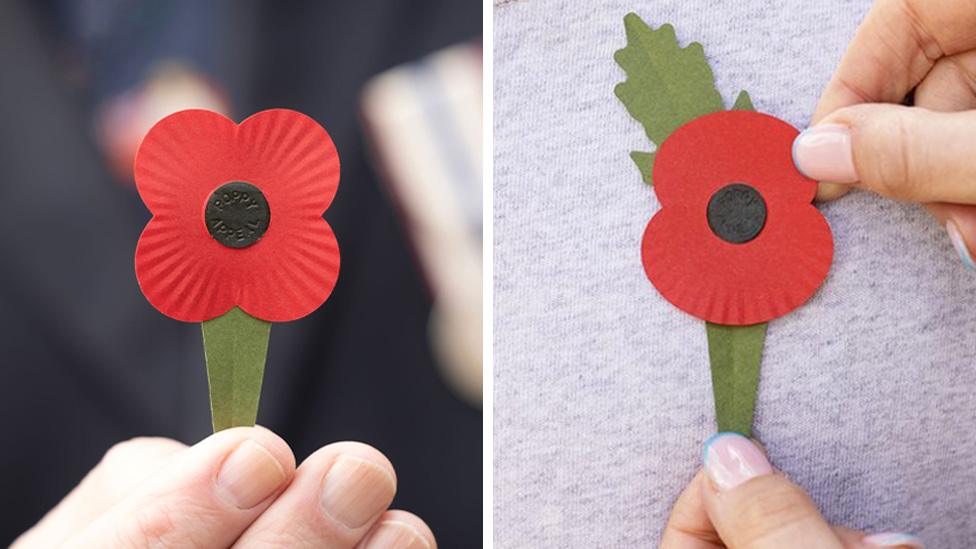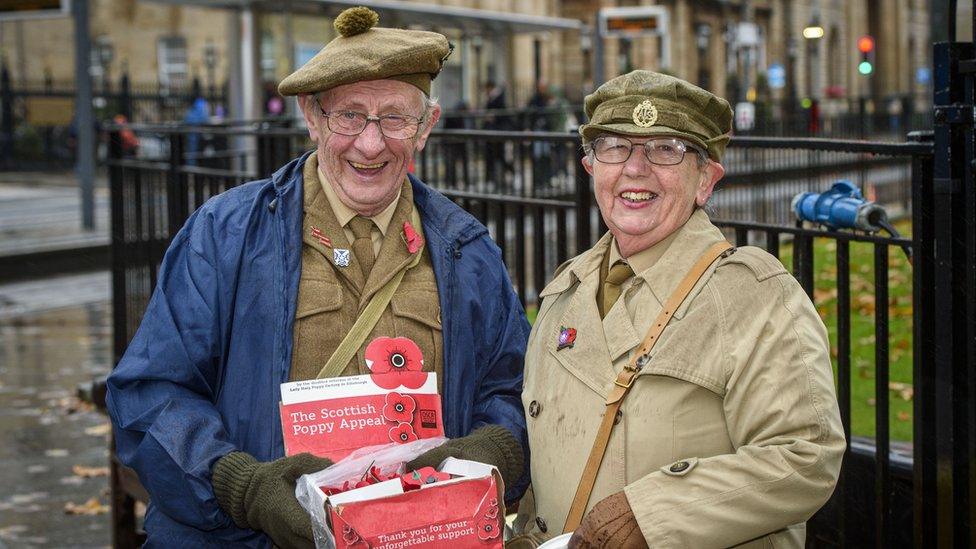Remembrance Sunday: What's different about the Scottish poppy?
- Published

Traditional remembrance events at local war memorials are held across Scotland every Remembrance Sunday.
Many of those taking part will be wearing poppies - more than 100 years after the tradition started.
They're not all the same, though. So what's different about the Scottish poppy?
How is the Scottish poppy different - and why?

The Scottish poppy, left, has four-lobed petals and no leaf, while the poppy used in the rest of the UK has two and sometimes a leaf
The Scottish poppy has the same recognisable blood red colour, but it has four-lobed petals and no leaf. That is in contrast to the poppy used in the rest of the UK, which has two petals and sometimes sports a green leaf.
Poppies sold in Scotland are made at Lady Haig's poppy factory in Edinburgh.
When it was founded back in 1926, it introduced a different style of poppy - designed by Lady Haig - and has stuck to it ever since.
Poppyscotland, which raises money to support armed forces north of the border, also said it would be "botanically incorrect" to add a leaf.

Davy Adamson, who served for 23 years with the Royal Highland Fusiliers, works at Lady Haig's factory making wreaths
They were traditionally made by veterans.
A team of 33 veterans - all with disabilities and vulnerabilities - are still working at the poppy factory.
They have served in conflicts from Northern Ireland in the 1970s to the war in Afghanistan and subsequent operations.
But this year they have been performing tasks other than making poppies, including assembling wreaths.
That's because, for the second year, all the poppies are now plastic-free and are made with a machine.
Poppyscotland has produced two million for this year's appeal, and 50% of the material used is made from recycled coffee cups.
The green plastic stem and black button in the centre of the poppy have been done away with to reduce plastic waste.
By 2026, these new-style poppies will have completely replaced the plastic and paper ones that we've been used to in the past.
When did the Scottish poppy come into being?
The poppy as a symbol of remembrance was started by the American humanitarian Moina Michael, who was inspired by Lt Colonel John McCrae's poem In Flanders Fields, external describing the small plants growing on the graves of soldiers buried in northern France and Belgium during World War One.
She began the poppy wearing and others soon followed.
However, after the first Poppy Appeal in 1921, demand for the simple symbol could not be fulfilled north of the border.
So, in 1926, Lady Haig - wife of Field Marshal Earl Haig - decided to open a poppy-making factory in Edinburgh, external which would be staffed by a team of disabled war veterans.
How many Scottish poppies are distributed each year?

Volunteers sell the poppies for charity
The poppies made at the Lady Haig poppy factory are distributed across the country. This year, that includes:
Two million new-style poppies (there are also a surplus of the old-style poppy still in circulation)
38,000 wreaths
For the rest of the UK, the Royal British Legion produces about 40 million poppies annually.
Is the Poppy Appeal just about poppies?
No, fundraisers produce all kinds of poppy-related merchandise, including wreaths, brooches, umbrellas, diaries and T-shirts.
The idea to branch out came in the very early days.
In 1928 Lady Haig decided the Edinburgh factory should expand into hand-crafted goods, including stuffed toys and jigsaw puzzles.
Today, fundraisers raise money in similar ways to other charities - everything from bake sales to bungee jumps are undertaken.
Does the Scottish poppy appeal have anything to do with the UK fundraising effort?
Poppyscotland is part of the Royal British Legion group of charities.
The British Legion operates across England, Wales and Northern Ireland.
Poppyscotland operates as a distinct charity north of the border - and all money raised in Scotland is spent here.
- Published10 October 2023
